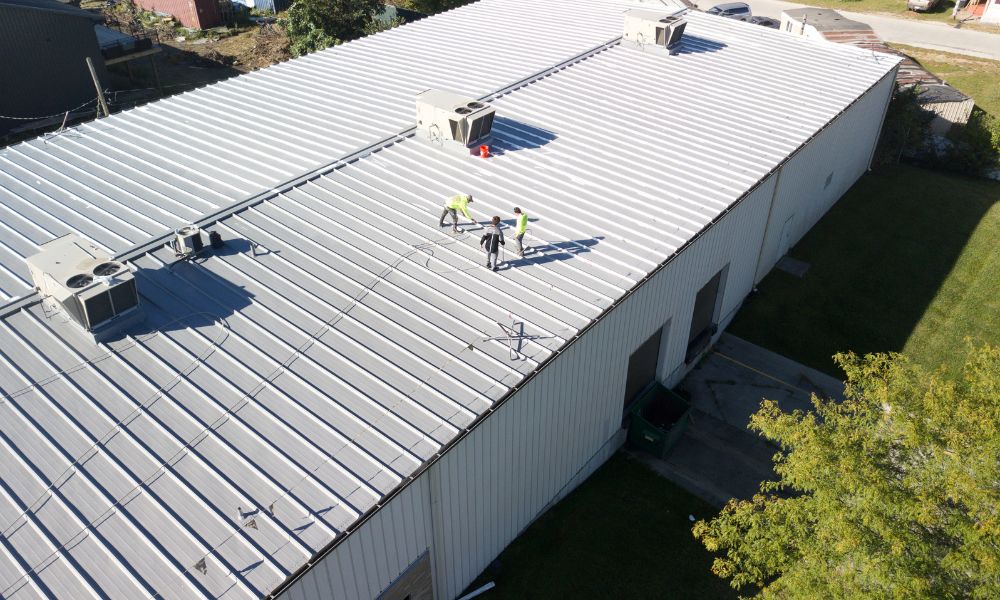Did you know that even flat roofing systems are potentially dangerous environments? Unfortunately, countless workers (and non-professionals) fall off leading edges and moveable ladders each year, accounting for nearly 25% of all fatal falls. However, with the right knowledge and proper behavior, you can traverse your roof with minimal risk of falling! Here is everything you need to know about walking on flat roofs safely to ensure the well-being of yourself and others.
Low Slope Roofs
Technically, most flat roofs aren’t flat – this is because some roofing systems require a slight slope for proper drainage. As such, the flattest roofs are “low-slope roofs,” which feature an incline anywhere from 0-in-12 pitch to 3-in-12 pitch. Be aware of slight inclines when walking on your roof, as these changes can cause you to lose balance.
Less Foot Traffic Is Better
The best way to avoid an accident on the roof is by, quite simply, avoiding walking on the roof! While professional roofing contractors possess the knowledge, experience, training, and equipment to remain safe while working on roofs, you do not. If possible, avoid time spent on the roof and leave repairs and maintenance to the experts. And while flat roofing systems are technically less dangerous than pitched roofs, your presence can still cause damages such as cracks and holes in the membrane layer.
Safe vs. Risky Flat Roofing Materials
Flat roofing systems are more diverse than you think; some use asphalt-based materials, while others use glass and metal. More importantly, some flat roofing materials are suitable for walking, while others are not. Built-Up Roofing, EPDM, and TPO roofing systems are safer to walk on, provided they were installed with appropriate amounts of roofing felt and waterproofing.
Conversely, glass-plastic fiberglass and metal roofing systems are NOT designed to support foot traffic. In fact, while highly durable, metal roofing is prone to punctures and leaks. Before considering taking a stroll onto your building, ensure you know the specific materials of your flat roofing system. Furthermore, ensure you maintain your roof properly, as a degrading roofing system is far more dangerous to ingress, egress, and traverse.
Proper Roof & Ladder Behavior
So, you’ve determined that your roof is a sturdy material that’s safe for walking; how should you act while on the roof to reduce the chances of an accident? Quite obviously, remain near the center of the roof, away from ledges.
Your walking pace should be slow and consistent. Ensure you avoid walking over drains, vents, skylights, and nearby powerlines. Lastly, be careful when handling tools, as dropping a sharp object onto your roofing system can cause punctures.
Walking on your roof becomes much more dangerous if your building doesn’t provide internal roof access. As previously mentioned, a high percentage of fatal falls occur on movable and fixed ladders. When scaling a ladder, ensure you place it on a secure base with a slope of 4-to-1. Additionally, allow the top of the ladder to extend three feet above the top of the roof. This setup reduces the risk of slipping and falling when ingressing and egressing.
We at Armour Roof Co. recognize the importance of walking on flat roofs safely. That’s why our commercial flat roofers are here to ensure your protection during roofing restoration and installation. Call our team today!



